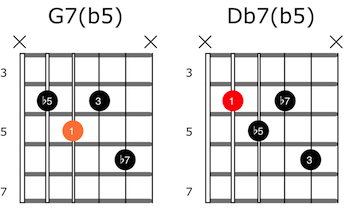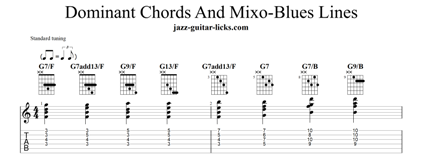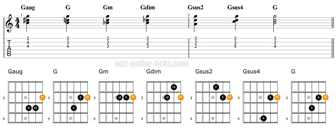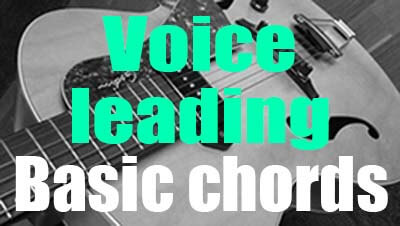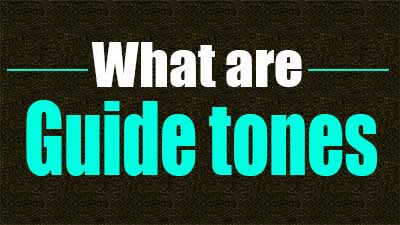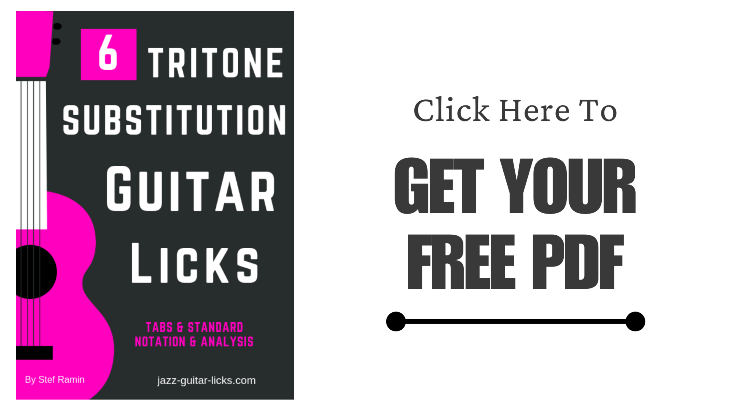voice leading
-
Chord Substitution - Enharmonic Equivalents - Altered & Extended Dominant Seventh Chords
- By jazz-guitar-licks
- On 2023-12-19
- 0 comments
This guitar theory lesson about harmonic equivalents provides six examples, that demonstrate how dominant seventh chords (rootless, altered or extended) can also be considered as other types of chords (min6, dim7, 7).
-
14 Dominant Chords And Mixo Blues Lines / Voice Leading / Guitar Lesson With Free PDF & Short YouTube Video
- By jazz-guitar-licks
- On 2023-09-15
- In Jazz Guitar Lessons
- 0 comments
This short guitar lesson provides 14 ways of connecting dominant chord voicings on the same string set (7 and extended) and three easy lines using the Mixo Blues Scale. A free transcription in PDF (or give what you want) is available here on the GUMROAD store.
-
Triad Chord Connections - Short Guitar Tutorial With Free PDF
- By jazz-guitar-licks
- On 2023-05-04
- 2 comments
In this short lesson for beginners you will learn how to build basic triad chords on guitar, how to connect, hear and recognize them in an easy way, step by step. Four exercises with tab/standard notation and neck diagrams are proposed here, the aim being to play the six main types of triads on different string sets without displacing the hand.
-
Voice Leading For Guitar - 5 Easy Exercises
- By jazz-guitar-licks
- On 2018-04-24
- In Chords / Voicings
- 0 comments
"Voice leading" is a term that refers to the smooth progression of each voice of a chord.
This technique consist to move individually one or several voices up or down by a step from one chord to the next.
This is very used by composers and improvisers in order to connect chords instead of bouncing them around.
The aim of this lesson is to connect or voice-lead basic four-note chords of the same types by moving only one voice.
This should help you learn some of the most important chords used in jazz guitar.
-
What Are Guide Tones and How to Use Them
- By jazz-guitar-licks
- On 2016-12-14
- 2 comments
Guide tones are the notes in a chord which leads or gives harmonic pull toward the next chord, these are an excellent way to study and absorb the sound of any chord progression.
Guide tones are used to outline chord progressions in an improvisation.
They are most of the time the 3rd and the 7th because this is what determines whether a chord is major, minor, or dominant.
This jazz guitar lesson explains how to solo over common jazz chord progressions by using guide tones.
